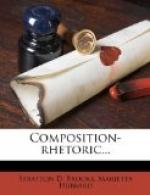+still+ (1) Adjective: The lake is still.
(2) Adverb: The tree is
still
lying where it fell. (3) Conjunction: He is
entertaining;
still he talks too much. (4) Verb: Oil
is
said to still the waves. (5) Noun: In the
still of
noonday
the song of the locust was loud.
+than+ (1) Conjunction: I am older than
she. (2) Preposition: Than
whom
there is none wiser.
+that+ (1) Demonstrative Pronoun: That
is right. (2) Conjunctive
Pronoun:
He that lives nobly is happy. (3) Adjective:
That
book is mine. (4) Conjunction: I say this that
you
may
understand my position. (5) Substantive Conjunction:
That
this is true is evident.
+the+ (1) Adjective (article): The
lake. (2) Adverb: The more ...
the
merrier.
+then+ (1) Adverb: I shall know then.
(2) Conjunction: If you so
decide,
then we may go.
+there+ (1) Adverb: The stream runs there.
(2) Expletive: There are
many
points to be considered. (3) Interjection: There!
there!
it makes no difference!
+what+ (1) Conjunctive Interrogative Pronoun:
I heard what you said.
Pronoun:
What shall I do? (3) Interrogative Adjective:
What
game do you prefer? (4) Conjunctive Adjective:
I
know
what books he enjoys. (5) Adverb: What
with this
and
what with that, he finally got his wish. (6)
Interjection:
What! what!
+while+ (1) Noun: A long while. (2) Verb:
To while away the time.
(3)
Conjunctive Adverb: I stay in while it
snows.
III. FIGURES OF SPEECH
+87. Figures of Speech.+—A figure of speech is a change from the usual form of expression for the purpose of producing a greater effect. These changes may be effective either because they are more pleasing to us or because they are more forcible, or for both reasons.
While figurative language is a change from the usual mode of expression, we are not to think of it as being unnatural. It is, in fact, as natural as plain language, and nearly every one, from the illiterate to the most learned, makes use of it, more or less, in his ordinary conversation. This arises from, the fact that we all enjoy comparisons and substitutions. When we say that we have been pegging away all day at our work, or that the wind howls, or that the man has a heart of steel, we are making use of figures of speech. Figurative language ranges from these very simple expressions to the beautiful figures of speech found in so much of our poetry. Written prose contains many beautiful and forcible examples, but it is in poetry that we find most of them.




